Harbin – China’s Winter Wonderland Posted by sasha on Feb 24, 2012 in Culture, Uncategorized
Harbin (哈尔滨 – Hā ěr bīn) is the capital of Heilongjiang province (黑龙江省 – hēi lóng jiāng shěng), located in the area of China known as Dongbei (东北 – dōng běi), or the Northeast. The city’s name comes from a Manchu word meaning “a place for drying fishing nets.” A city with thousands of years of history, Harbin has always been an important and influential place in China. Known for its Russian influence, Harbin once served as an escape from the Soviet Union for many White Russians who supported the czarist state. You can still see this today, with plenty of Russian style buildings and restaurants, including the beautiful St. Sophia Cathedral (圣索非亚教堂 – shèng suǒ fēi yà jiào táng). Although you can’t attend a mass in this old Orthodox church, you can learn about the history of Harbin’s architecture as it now serves as a museum.
Walking along the city’s Central Avenue (中央大街 – zhōng yāng dà jiē), which is pedestrian only, you can see the influence from many countries in the building styles while you go shopping, and you can also find plenty of restaurants and bars. On our trip there, we dropped by the USA Bucks bar, which is run by a Chinese cowboy. Go there to see for yourself.
These days, Harbin’s biggest attraction is its annual Ice and Snow Festival (冰雪节 – bīng xuě jié). Thanks to its frigid winter temperatures, Harbin is able to support massive ice and snow sculptures for months at a time. During the daytime, it’s best to hit the Sun Island International Snow Sculpture Art Fair (太阳岛国际雪雕艺术博览会 – tài yáng dǎo guó jì xuě diāo yì shù bó lǎn huì), where you can stroll around the park admiring the massive snow sculptures and take part in a variety of activities (which cost extra, of course). Each year there is a different theme for the sculptures, such as Greek mythology, which was on display when I visited in 2011. Thankfully, there are plenty of makeshift shops where you can warm up with a hot cup of coffee or a steaming bowl of noodles.
When the sun sets, its best to head over to the Ice and Snow World (冰雪大世界 – bīng xuě dà shì jiè), which features enormous structures made of ice that are illuminated with neon lights. From scaling ice castles to speeding down an ice slide to taking horse-drawn carriage rides, there’s plenty to do here. Just make sure you dress appropriately, as temperatures are well below freezing. I’m talking multiple layers here, people – wear a few pairs of socks, double down on your gloves, and make sure you have a thick scarf. If that’s not enough to warm you up, there’s always vodka (伏特加酒 – fú tè jiā jiǔ), which is quite popular in Harbin (thanks, Russians!).
Before you head out of Harbin, it’s worth it to take a trip out to the Siberian Tiger Preserve (老虎公园 – lǎo hǔ gōng yuán), which is about a 30-minute taxi ride outside of the city. Here, you can ride on a bus through the grounds where dozens of huge tigers and lions roam freely. There’s plenty of food available for purchase, too – not for you, but for the hungry, hungry animals. For just 10 RMB, you can feed one of the cute kitties a strip of beef with a pair of tongs. Up that price to 40, and you can toss a live chicken to them. You can even feed the whole gang by dropping a cool 2,000 on a live cattle. I doubt that ever happens, but it is on the menu. Sorry, PETA, but China isn’t really keen on the “animal rights” thing. In addition to the lions and tigers, there are also a variety of other animals, such as cheetahs, bears, and even a liger.
For those of you who love flying down the slopes in wintertime, you also have the option of catching a train out to Yabuli (亚布力 – Yà bù lì), one of China’s largest skiing resorts. Apparently, there’s also stuff to do in Harbin in the summer, but with so much going on during the winter, that’s definitely the best time to visit.
Check out my video series about my trip to Harbin on our YouTube page:

Build vocabulary, practice pronunciation, and more with Transparent Language Online. Available anytime, anywhere, on any device.
About the Author: sasha
Sasha is an English teacher, writer, photographer, and videographer from the great state of Michigan. Upon graduating from Michigan State University, he moved to China and spent 5+ years living, working, studying, and traveling there. He also studied Indonesian Language & Culture in Bali for a year. He and his wife run the travel blog Grateful Gypsies, and they're currently trying the digital nomad lifestyle across Latin America.




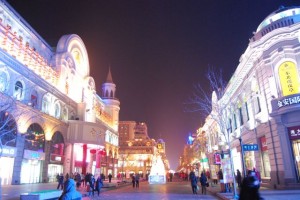
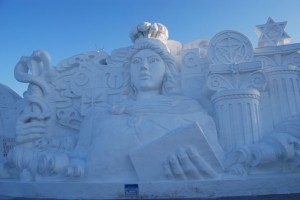
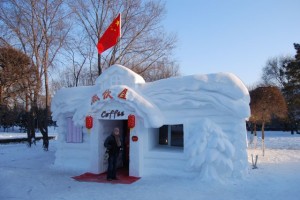

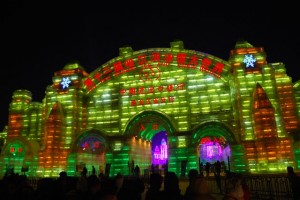
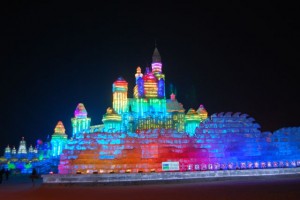
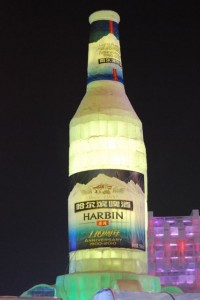



Comments:
Peter:
Hi, I wonder about ‘tigers and lions roam freely’ – no, I have no doubt about the freedom as much as about the presence of lions. How on earth do lions belong there? Do they also get layers of socks and coats? :)))
harbin china hotels:
:))) great question :))) i love harbin it’s just such an amazing place it’s…like no other place on earth